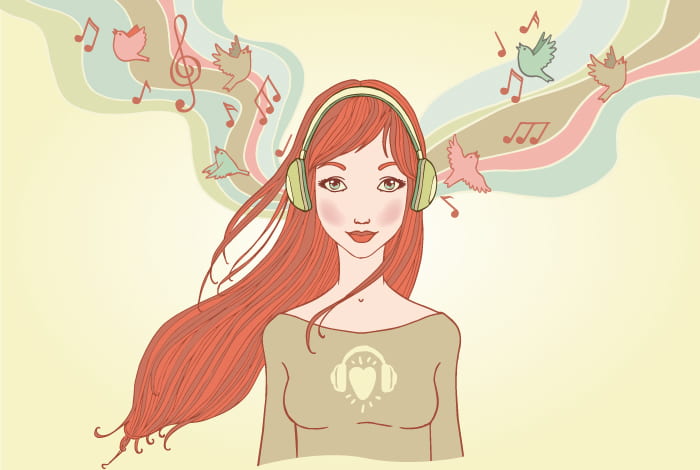The iPhone’s ancestor
UCI writer takes a nostalgic look at how the Sony Walkman changed the world – and uncovers lessons about fear of technology

At the risk of sounding like a grumpy old man, Rebecca Tuhus-Dubrow said she longs for the halcyon days of the 1990s, when she was a teenager and portable music players could do only one thing: play songs.
In contrast with today’s less civilized smartphone era, you didn’t see folks getting into accidents because they’re distracted, or behaving rudely because they’re more interested in their devices than other people, the journalist recalled.
“I loved my Sony Walkman,” she said. “But I hate my iPhone – and I hate your iPhone.”
Then again ….
When Tuhus-Dubrow – a writer in residence at the University of California, Irvine’s Newkirk Center for Science & Society – began researching the Walkman’s history for a forthcoming book, she made a curious discovery.
Many of her complaints about the iPhone mirror reactions to Sony’s portable cassette player when it debuted in 1979.
Although adored by millions, the Walkman and its “featherweight” stereo headphones also came under fire for causing ear damage, mishaps (pedestrians and cyclists couldn’t hear oncoming cars) and social withdrawal as users tuned out the world around them.
Sound familiar?
Appearing on campus last week in conversation with Lucas Hilderbrand, an associate professor of film & media studies at UCI, Tuhus-Dubrow discussed how the Walkman reshaped the music industry, helped fuel a fitness boom and altered the nature of boredom.
Of course, portable music wasn’t a totally novel concept when the Walkman premiered, she noted. Transistor radios had paved the way in the 1950s and ’60s, followed by boomboxes in the 1970s.
But neither predecessor had as much cultural impact, she said. Shortly after the Walkman came into being, cassettes dethroned vinyl records as the top-selling music format, giving rise to mixtapes, the granddaddy of today’s digital playlists. (Mixtapes were popular for road trips and even as a form of love letter, Hilderbrand observed.)
Walkmans also breathed life into the fledgling books-on-tape industry and perhaps played a role in the exercise craze of the 1980s, Tuhus-Dubrow said, displaying an old Jane Fonda workout cassette advertisement as evidence.
The biggest transformation, however, involved how people perceive boredom and inhabit public spaces, she said. By adding a soundtrack to daily life, Sony’s device stoked a notion that “ordinary experience isn’t enough.” The Walkman also ripped the social fabric, enabling users to “withdraw into their own private world,” effectively shutting out everything and everyone around them, Tuhus-Dubrow said.
Both trends seem worse with smartphones, she added, which is why Tuhus-Dubrow waxes nostalgic for the golden era of single-function mobile cassette players. “I guess I sound grumpy,” she conceded.
It’s an age-old refrain. A new technology arises and people pine for the past, Hilderbrand said. Even the telephone had critics at first, he noted: Some folks saw Alexander Graham Bell’s invention as an intrusion in the home.
Tuhus-Dubrow’s Walkman treatise, which she expects to be published in 2017 as part of a series of books on everyday objects (from eye charts and phone booths to remote controls and refrigerators), figures to be a case study of how new gadgets typically inspire both hopes and fears.
With that in mind, Hilderbrand offered a snap forecast for what will happen when smartphones are eventually upstaged by some future technological marvel: “I predict there will be cultural anxiety and nostalgia for the iPhone.”